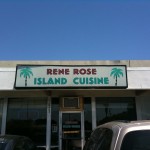Part of this post has been posted on Yelp.com
You can find good and bad restaurants in any city or country. At times its not so much about how to avoid them, but rather about how you manage expectations. For Bay Area residents thinking of going to the Philippines, and who want to prepare themselves for how bad some of our restaurants can get, then you’re in luck. You can experience authentic Pinoy bad service without getting on a plane. Introducing Ling Nam Noodle House in South San Francisco.
I’ve only been to this place twice. Both have been disasters.
My first visit happened the week after Thanksgiving last year, with a large group of friends. There were five families in our group, so we occupied three sets of tables. Our table was closest to the register so the waitress got to us first — which set off the first sign that the evening was not going to go well. She started by asking if we were together, to which we said yes. She then told us that we would pay have to pay together.
Come again? Who was she to tell us how to pay? Her “instruction” actually ran contrary to what we had in mind which was to pay per family. That way we didn’t have to worry about keeping track of who owed what.
Happily one of us was a regular, and charmed his way into letting us have our way. But we still got an “admonition” that we shouldn’t do this next time. Hmmm . . . interesting. Things went downhill from there.
My wife ordered a fish dish called “bangus”, she ended up with another fish that wasn’t even on the menu. By then I had gotten sufficiently pissed with this place that I picked up my wife’s dish and took it to the cashier to ask for an explanation. Apparently, they had run out of the Bangus and simply saw fit to substitute another fish dish without telling us. To make things worse, they initially insisted that what they served was what we ordered. My wife protested, which forced them to admit that they had run out. My wife eventually ordered a completely different dish.
On my end, I order a deep fried crispy pork dish called Lechon Kawali. They got the order right, but it smelled and tasted so rancid I couldn’t help but wonder if they cooked it in the same oil that they had already used for fish.
By the end of the meal, I had pretty much decided never to return to this place. But it was not to be.
In of May this year, friends who picked us up from the San Francisco airport whisked us here for dinner. We arrived late in the evening, and one of our friends had a Pinoy-food craving. This was pretty much the only place for that around. I wasn’t thrilled, but I figured that I’d give the place another try.
This time, my wife and I were careful to avoid the food we ordered before. I ordered grilled pork. To be fair, it was pretty good.
But the staff were . . . as interesting as ever.
Apparently live entertainment was made available that night, in the form of the one member of the kitchen staff challenging another to fist fight. Nothing like a good dose of shouting and commotion to spice up one’s dinner. Interesting insight into the mindset of the people preparing the food.
Arguably, the main thing going for this place is its hours of operation. If you have a craving for Filipino food at odd hours, and you are either disinclined, or don’t have enough time, to cook yourself, then Ling Nam is indeed the place for you. But take the time-element out of the equation, and there are plenty of other BETTER places within 10 minutes of this place.
Perhaps with better management, this particular branch (I’ve never been to others), could become decent. I’m not in any particular hurry to follow up on their progress.
